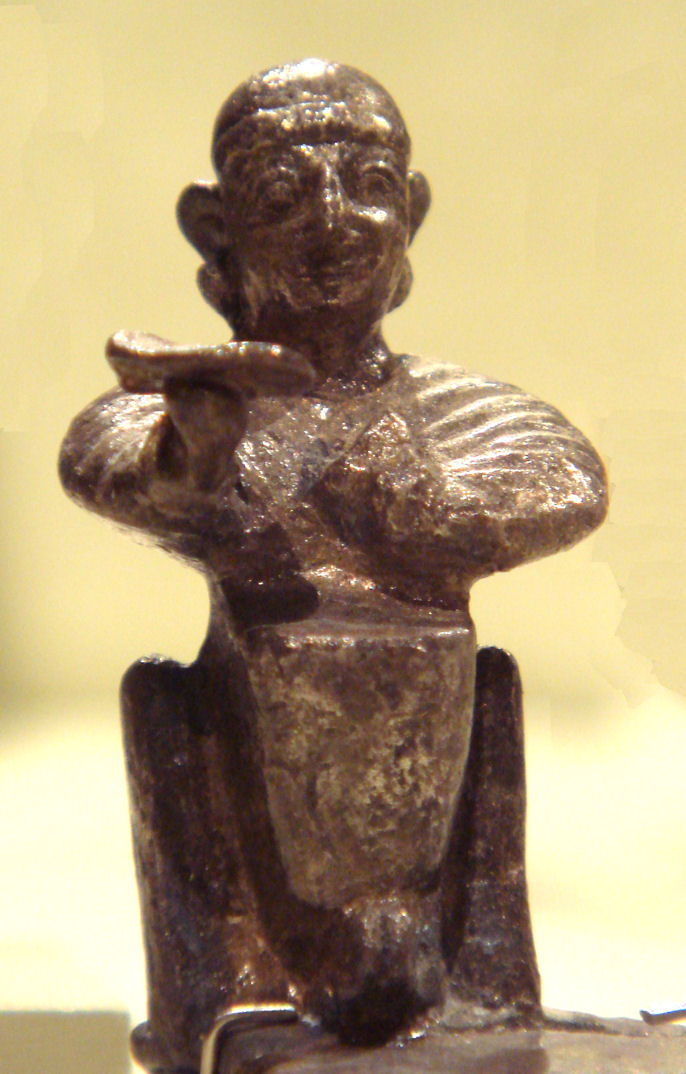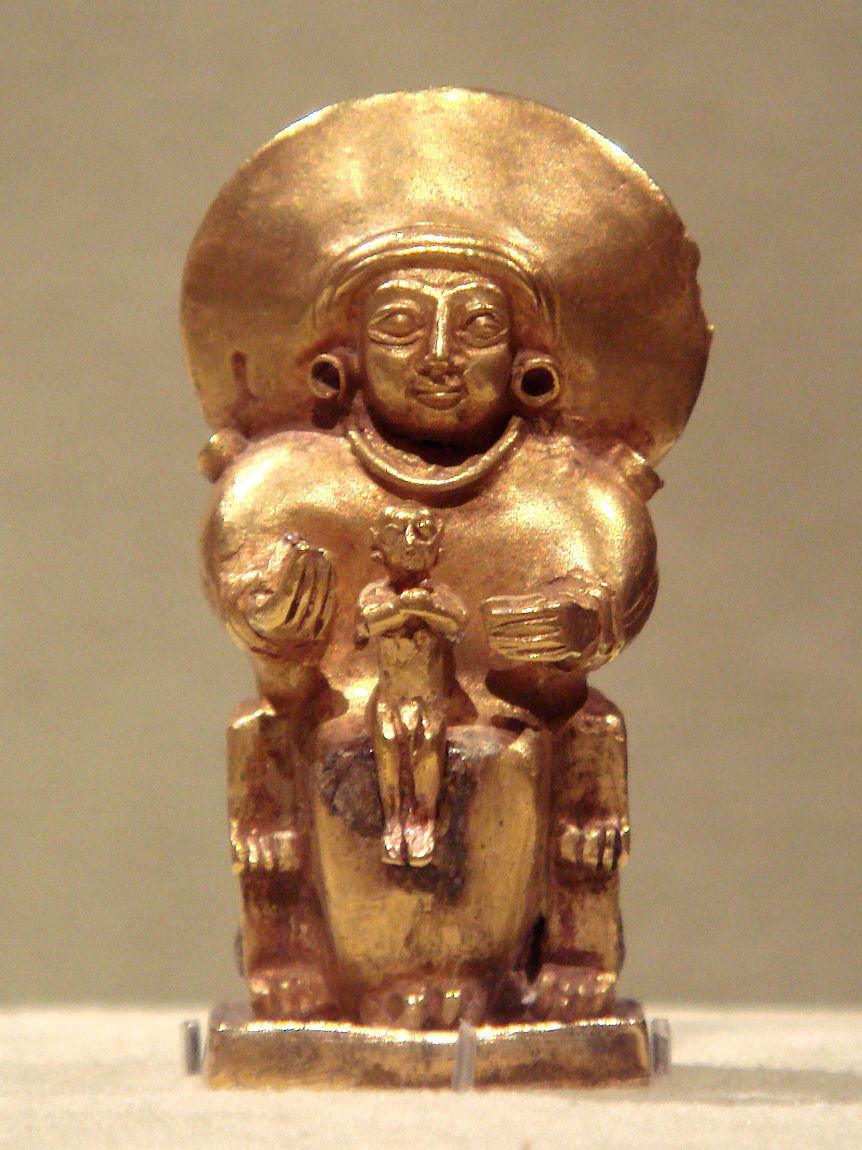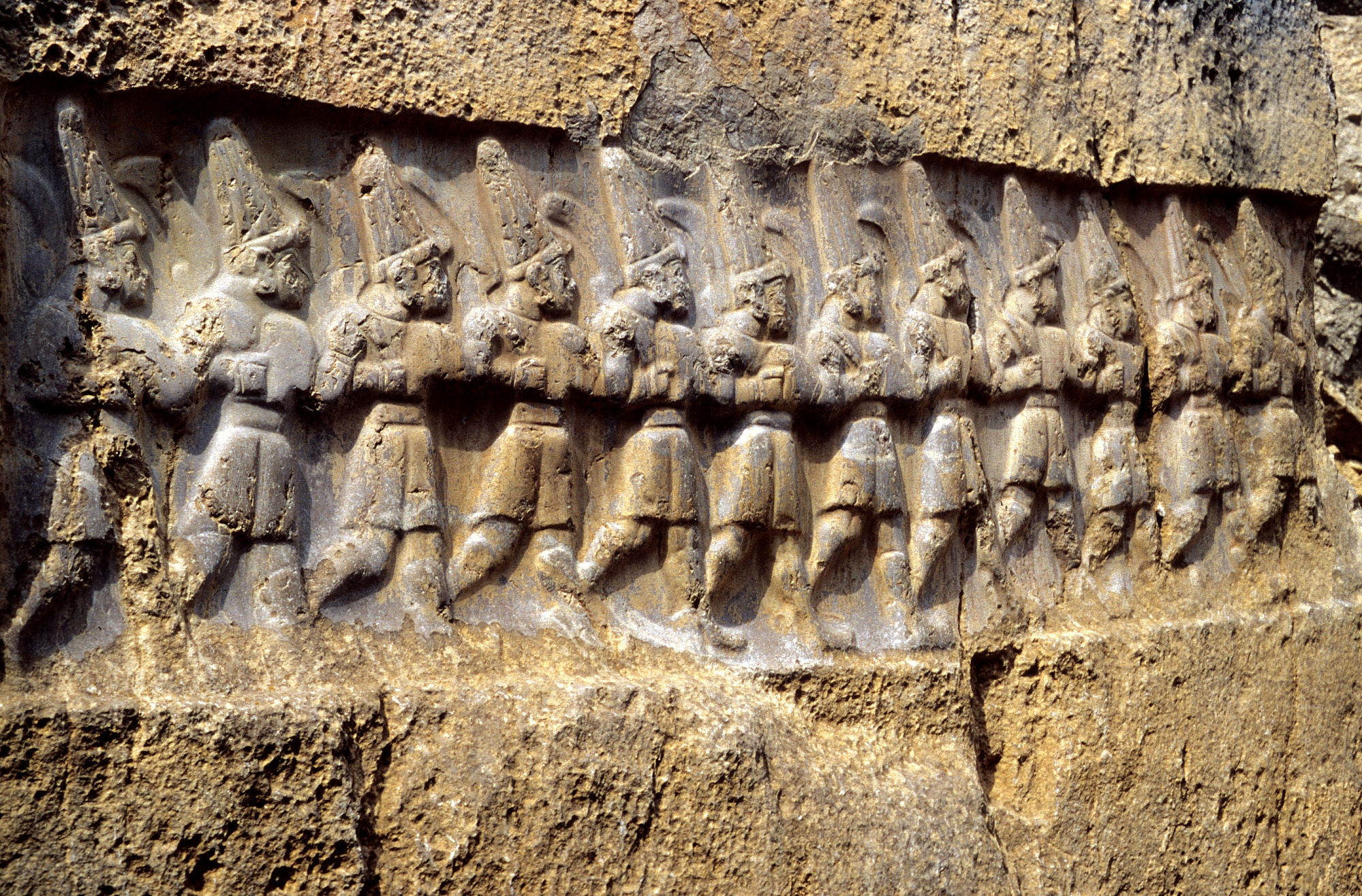|
Innara
Innara (Cuneiform: ) is the Hittite god of woods and fields. Inar is mentioned in the Hahhima-myth. There Tarhun sends Inar to look for sun god Istanu, but the ice devil Hahhima freezes Inar. Inar's tasks are similar to the tasks of the god of wild animals and hunting, Kurunta. Name In the Luwian language Luwian (), sometimes known as Luvian or Luish, is an ancient language, or group of languages, within the Anatolian branch of the Indo-European language family. The ethnonym Luwian comes from ''Luwiya'' (also spelled ''Luwia'' or ''Luvia'') – ..., Innara is called Annari. The name of the god comes from the word ''innara-'', meaning "power, strength", which itself comes from ''*h₁en-h₂nor-o-'', a Proto-Indo-European word meaning "having masculinity", from the root ''*h₂ner-'' 'man'. Kloekhorst, Alwin. Etymological Dictionary of the Hittite Inherited Lexicon'. Leiden Indo-European Etymological Dictionary Series 5. Leiden, The Netherlands; Boston, 2008. pp. ... [...More Info...] [...Related Items...] OR: [Wikipedia] [Google] [Baidu] |
Inara (goddess)
Inara or Inar, in Hittite mythology, was the goddess of the wild animals of the steppe and daughter of the Storm-god Teshub/ Tarhunt.Christopher SirenHittite/Hurrian Mythology REF 1.2 Retrieved April 27, 2010. She corresponds to the " potnia theron" of Greek mythology, better known as Artemis. Myths After the dragon Illuyanka wins an encounter with the storm god, the latter asks Inara to give a feast, most probably the '' Purulli'' festival. Inara decides to use the feast to lure and defeat Illuyanka, who was her father's archenemy, and enlists the aid of a mortal named Hupasiyas of Zigaratta by becoming his lover. The dragon and his family gorge themselves on the fare at the feast, becoming quite drunk, which allows Hupasiyas to tie a rope around them. Inara's father can then kill Illuyanka, thereby preserving creation. Inara built a house on a cliff and gave it to Hupasiyas. She left one day with instructions that he was not to look out the window, as he might see his famil ... [...More Info...] [...Related Items...] OR: [Wikipedia] [Google] [Baidu] |
Hittite Cuneiform
Hittite cuneiform is the implementation of cuneiform script used in writing the Hittite language. The surviving corpus of Hittite texts is preserved in cuneiform on clay tablets dating to the 2nd millennium BC (roughly spanning the 17th to 12th centuries BC). Hittite orthography was directly adapted from Old Babylonian cuneiform. As Harry A. Hoffner and Craig Melchert point out: "It is therefore generally assumed that Ḫattušili I (ca. 1650–1600), during his military campaigns in North Syria, captured scribes who were using a form of the late Old Babylonian syllabary, and these captives formed the nucleus of the first scribal academy at Ḫattuša." Alwin Kloekhorst, on the other hand, while affirming that Hittite cuneiform derives from Old Babylonian, casts doubt on the role of Ḫattušili I in its adoption, claiming that "the transfer of Syro-Babylonian scribal tradition into Asia Minor may have been a more gradual process that predates the Hittites occupation of Ha ... [...More Info...] [...Related Items...] OR: [Wikipedia] [Google] [Baidu] |
Hittite Mythology
Hittite mythology and Hittite religion were the religious beliefs and practices of the Hittites, who created an empire centered in Anatolia from . Most of the narratives embodying Hittite mythology are lost, and the elements that would give a balanced view of Hittite religion are lacking among the tablets recovered at the Hittite capital Hattusa and other Hittite sites. Thus, "there are no canonical scriptures, no theological disquisitions or discourses, no aids to private devotion". Some religious documents formed part of the corpus with which young scribes were trained, and have survived, most of them dating from the last several decades before the final burning of the sites. The scribes in the royal administration, some of whose archives survive, were a bureaucracy, organizing and maintaining royal responsibilities in areas that would be considered part of religion today: temple organization, cultic administration, reports of diviners, make up the main body of surviving te ... [...More Info...] [...Related Items...] OR: [Wikipedia] [Google] [Baidu] |
Teshub
Teshub was the Hurrians, Hurrian weather god, as well as the head of the Hurrian pantheon. The etymology of his name is uncertain, though it is agreed it can be classified as linguistically Hurrian language, Hurrian. Both Phonetics, phonetic and Logogram, logographic writings are attested. As a deity associated with the weather, Teshub could be portrayed both as destructive and protective. Individual weather phenomena, including winds, lightning, thunder and rain, could be described as his weapons. He was also believed to enable the growth of vegetation and create rivers and springs. His high position in Hurrian religion reflected the widespread importance of weather gods in northern Mesopotamia and nearby areas, where in contrast with the south agriculture relied primarily on rainfall rather than irrigation. It was believed that his authority extended to both mortal and other gods, both on earth and in heaven. However, the sea and the underworld were not under his control. Depictio ... [...More Info...] [...Related Items...] OR: [Wikipedia] [Google] [Baidu] |
Istanu
The Sun goddess of Arinna, also sometimes identified as Arinniti or as Wuru(n)šemu, is the chief Goddess of Hittite mythology. Her companion is the weather god Tarḫunna. She protected the Hittite kingdom and was called the "Queen of all lands." Her cult centre was the sacred city of Arinna. In addition to the Sun goddess of Arinna, the Hittites also worshipped the Sun goddess of the Earth and the Sun god of Heaven, while the Luwians originally worshipped the old Proto-Indo-European Sun god Tiwaz. It appears that in the northern cultural sphere of the early Hittites, there was no male solar deity. Distinguishing the various solar deities in the texts is difficult since most are simply written with the Sumerogram dUTU (Solar deity). As a result, the interpretation of the solar deities remains a subject of debate. Family and myths The Sun goddess of Arinna and the weather god Tarḫunna formed a pair and together they occupied the highest position in the Hittite state's ... [...More Info...] [...Related Items...] OR: [Wikipedia] [Google] [Baidu] |
Kurunta (god)
Kurunta () or Kurunti(ya) is the Hittite stag god and a tutelary god of the countryside. Name The name of Kurunta is spelled as (DEUS)CERVUS in Hieroglyphic Luwian, or as dKAL in Hittite cuneiform. As dKAL has to be read as dLAMMA following Assyriological tradition, many times it is directly transliterated as dLAMMA instead. Kurunta was attested as Runti(ya) in the first millennium BC, although there is a possibility that the loss of the initial syllable may have occurred during the time of the Hittite New Kingdom/Empire period. Character and iconography Kurunta is a tutelary deity, as seen from the usage of the sign dKAL which corresponds to dLAMMA. However, there are still differences between the Hittite dKAL deities and the Mesopotamian dLAMMA deities, such as that KAL and LAMMA have different meanings, and Archi adds that unlike the Mesopotamian dLAMMA the Hittite dKAL deities were always considered male. His sacred animal is the stag. Although the stag was not th ... [...More Info...] [...Related Items...] OR: [Wikipedia] [Google] [Baidu] |
Luwian Language
Luwian (), sometimes known as Luvian or Luish, is an ancient language, or group of languages, within the Anatolian branch of the Indo-European language family. The ethnonym Luwian comes from ''Luwiya'' (also spelled ''Luwia'' or ''Luvia'') – the name of the region in which the Luwians lived. Luwiya is attested, for example, in the Hittite laws. The two varieties of Luwian are known after the scripts in which they were written: Cuneiform Luwian (''CLuwian'') and Hieroglyphic Luwian (''HLuwian''). There is no consensus as to whether these were a single language or two closely related languages. Classification Several other Anatolian languages – particularly Carian, Lycian, and Milyan (also known as Lycian B or Lycian II) – are now usually identified as related to Luwian – and as mutually connected more closely than other constituents of the Anatolian branch.Anna Bauer, 2014, ''Morphosyntax of the Noun Phrase in Hieroglyphic Luwian'', Leiden, Brill NV, pp. 9–10. Th ... [...More Info...] [...Related Items...] OR: [Wikipedia] [Google] [Baidu] |
Proto-Indo-European Language
Proto-Indo-European (PIE) is the reconstructed common ancestor of the Indo-European language family. No direct record of Proto-Indo-European exists; its proposed features have been derived by linguistic reconstruction from documented Indo-European languages. Far more work has gone into reconstructing PIE than any other proto-language, and it is the best understood of all proto-languages of its age. The majority of linguistic work during the 19th century was devoted to the reconstruction of PIE and its daughter languages, and many of the modern techniques of linguistic reconstruction (such as the comparative method) were developed as a result. PIE is hypothesized to have been spoken as a single language from approximately 4500 BCE to 2500 BCE during the Late Neolithic to Early Bronze Age, though estimates vary by more than a thousand years. According to the prevailing Kurgan hypothesis, the original homeland of the Proto-Indo-Europeans may have been in the Pon ... [...More Info...] [...Related Items...] OR: [Wikipedia] [Google] [Baidu] |
Alwin Kloekhorst
Alwin Kloekhorst (born 4 March 1978) is a Dutch linguist, Indo-Europeanist and Hittitologist. He was appointed a full professor in Anatolian Linguistics at Leiden University in November 2023. Biography Kloekhorst received his Ph.D. in 2007 at Leiden University for his thesis on Hittite. In over 1200 pages, his dissertation describes the history of Hittite in the light of its Indo-European language origin. Part One, ''Towards a Hittite Historical Grammar'', contains a description of Hittite phonology and a discussion of the sound laws and morphological changes that took place between the Proto-Indo-European and Hittite. Part Two, ''An Etymological Dictionary of the Hittite Inherited Lexicon'', contains etymological treatments of all Hittite words of Indo-European origin. One of the dissertation's most important conclusions is the confirmation that the Anatolian languages split from Proto-Indo-European before all other Indo-European branches, which have undergone a period of com ... [...More Info...] [...Related Items...] OR: [Wikipedia] [Google] [Baidu] |
Hittite Deities
Hittite mythology and Hittite religion were the religious beliefs and practices of the Hittites, who created an empire centered in Anatolia from . Most of the narratives embodying Hittite mythology are lost, and the elements that would give a balanced view of Hittite religion are lacking among the tablets recovered at the Hittite capital Hattusa and other Hittite sites. Thus, "there are no canonical scriptures, no theological disquisitions or discourses, no aids to private devotion". Some religious documents formed part of the corpus with which young scribes were trained, and have survived, most of them dating from the last several decades before the final burning of the sites. The scribes in the royal administration, some of whose archives survive, were a bureaucracy, organizing and maintaining royal responsibilities in areas that would be considered part of religion today: temple organization, cultic administration, reports of diviners, make up the main body of surviving te ... [...More Info...] [...Related Items...] OR: [Wikipedia] [Google] [Baidu] |





